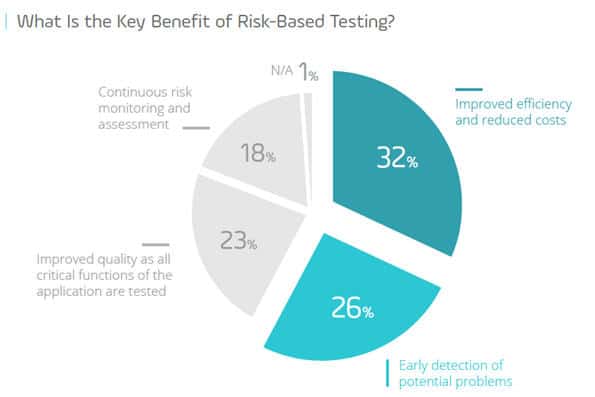Table of Content
A recent survey of senior enterprise IT decision makers in the U.K. and the U.S. commissioned by Panaya is looking at the key challenges experienced by testing professionals In the trenches today. Findings from the survey are consistent with the World Quality Report. They indicate that the expectation of QA and testing to contribute to end-user satisfaction has grown over the years.
Prioritizing Quality Does Not Make Scoping Easier
Traditionally, testers were primarily tasked with ensuring software product’s functionality. In recent years, however, people in charge of test management are becoming more aware that the quality of customer experience is equally important. 28% of our 2017 survey participants vs. 38% today predict that testers will need to focus on quality.

This apparently doesn’t make test scoping any easier. Based on Panaya’s survey, deciding what to test can still be a major issue with 67% of those surveyed noting this as a challenge. Introducing any type of change to a business application – regardless of project size – can be overwhelming. It’s not just about ensuring test plans cover all business requirements. Introducing change is really about delivering a desired – and very specific – business impact.
Want to Save Time and Still Ace UX? Don’t Test What Is Out of Scope
The survey shows the value for risk-based testing. Over one third (32%) stated it improves efficiency and helps to better allocate test efforts. Risk-based testing establishes an understanding of what has and has not been tested. It also helps test plans scoping, to improve efficiency and reduce costs.
Addressing Undiscovered Risks
With automated impact analysis, Panaya Release Dynamix provides visibility to what will break with the implementation of changes. By understanding what will break, Release Dynamix can also suggest what tests in your library cover these impacted areas. This methodology of Risk-based testing enables time and cost savings. It means that only relevant business processes are tested prior to release into production.

Risk-based testing is a powerful tool for addressing undiscovered risks. It ensures that critical risks have test coverage.
How Beneficial Is This?
According to survey respondents, 1/3 of all surveyed believe that risk-based testing helps to better allocate test efforts. Risk-based testing also improves efficiency and reduces costs by better scoping test plans. Risk-based testing means that no time is wasted on testing what is out of scope.
In addition, ¼ of those surveyed believe it will improve shift-left and drive better experiences with all critical functions of the application.
The Right Tool at the Right Time (That Is, Early)
When it comes to delivery impact and risk mitigation, shifting left is key. Completing testing and quality assurance activities earlier in the development lifecycle sounds complex, but the right tool can make this a seamless process.
With Panaya Release Dynamix, manage risk early with impact analysis, code quality review, risk-based testing, and real-time risk as part of the overall delivery process – without any additional reskilling or team reorgs.

